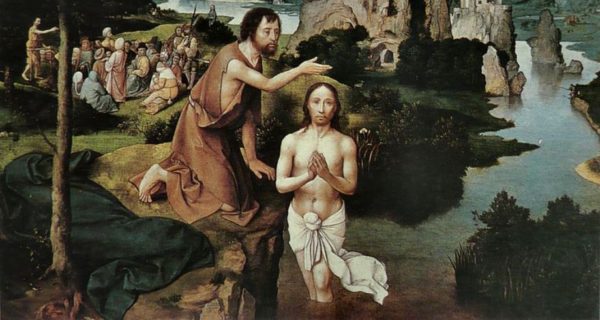Saint John the Baptist, a man not shaken by the wind, a man not dressed in the finery of the palace, eater of locusts. Well, that last one doesn’t sound quite as impressive, but he did eat locusts as well as whatever he could find out in the desert near the Jordan River. He lived the life God called him to live, and he lived it well. So, he does have a feast day in the Calendar of Saints to commemorate his beheading, but he also has a second feast, and one of the only three that the Church celebrates in this manner; that of his birthday, the two others being the birthdays of Christ and His holy Mother, the Blessed Virgin Mary. This feast used to be a major holiday, a summer Christmas, in a way, to celebrate the man who was the voice crying in the wilderness, making the way for the Lord. But why is this important for the Liturgical Year? Well, for one thing, it marks the beginning of the countdown to Christmas as St. John himself said, “I must decrease so He can increase” (John 3:30). The date, June 24th, also corresponds to this phrase as this is when the sunlight begins to “decrease” in the Northern Hemisphere. Another thing is that it also commemorates the power and grace of God Himself. A woman long thought barren because of her age gave birth to a child predestined by God for greatness. And, like his Master who was to be born six months later, he answered the call willingly.
It is believed that, when John jumped in Elizabeth’s womb at the coming of Mary and Jesus, that is when Jesus bestowed upon John an immense grace, to be born without original sin. John was not conceived without original sin, but was born without it, hence his birthday is one of the three celebrated. It is celebrated, not because John is our Messiah, but because he is one of our prime examples. We too must prepare the way for the Lord, if not in other lives, then mainly in our own. St. John is there to remind us to look to Christ first before everything else, to bow before our God, to kiss with reverence the sandals we are not fit to tie. The bonfires burned on the eve of St. John’s was to reference the fires of the Holy Ghost cleansing our souls and enflaming our hearts with a burning and passionate love for our Creator.
Unfortunately, like the feast of St. Michael, this feast day has become less and less celebrated. Like Christmas, it had an Advent, like Christmas, it had a rich history of traditions and symbolism associated with it. But unlike Christmas, it could not become the secular holiday that Christmas has become. For one thing, in America, it is overshadowed by Independence Day, for another, it does call to mind the hardships that one must endure for the sake of Christ. Like with the Blessed Virgin Mary, the devil just loathes that. He cannot stand someone who refuses fame and fortune for love of God, he cannot stand someone who would rather melt into the shadows so that the Lord on high may shine all the brighter, because it only reminds him of how far he has fallen, and how far he seeks to drag us, if we ourselves are not doing the dragging. This is why the Liturgical Year had the most important feasts of the year ranked as holidays, to remind us of what the devil hates and the tools they used given to them by God.
St. John in particular reminds us to remain unshaken by the winds of fame and reputation, to remain untouched by the clothes of greed and pride. In this day and age, we need his example all the more, for he will remind us to let ourselves decrease, so that the Light of the world may increase.

